 Weird Stuff
Weird Stuff  Weird Stuff
Weird Stuff  History
History 10 Times Trickery Won Battles
 Technology
Technology 10 Awesome Upgrades to Common Household Items
 Misconceptions
Misconceptions 10 Hilarious (and Totally Wrong) Misconceptions About Childbirth
 Weird Stuff
Weird Stuff 10 Warning Labels That Exist Because Someone Actually Tried It
 Health
Health Ten Confounding New Inventions from the World of Biomedicine
 Creepy
Creepy 10 Death Superstitions That Will Give You the Creeps
 Movies and TV
Movies and TV 10 Movies That Get Elite Jobs Right, According to Experts
 Weird Stuff
Weird Stuff 10 Times Real Laws Were Based on Bizarre Hypotheticals
 Animals
Animals 10 Inspiring Tales of Horses Being Human
 Weird Stuff
Weird Stuff 10 Typos That Accidentally Changed History
 History
History 10 Times Trickery Won Battles
 Technology
Technology 10 Awesome Upgrades to Common Household Items
Who's Behind Listverse?

Jamie Frater
Head Editor
Jamie founded Listverse due to an insatiable desire to share fascinating, obscure, and bizarre facts. He has been a guest speaker on numerous national radio and television stations and is a five time published author.
More About Us Misconceptions
Misconceptions 10 Hilarious (and Totally Wrong) Misconceptions About Childbirth
 Weird Stuff
Weird Stuff 10 Warning Labels That Exist Because Someone Actually Tried It
 Health
Health Ten Confounding New Inventions from the World of Biomedicine
 Creepy
Creepy 10 Death Superstitions That Will Give You the Creeps
 Movies and TV
Movies and TV 10 Movies That Get Elite Jobs Right, According to Experts
 Weird Stuff
Weird Stuff 10 Times Real Laws Were Based on Bizarre Hypotheticals
 Animals
Animals 10 Inspiring Tales of Horses Being Human
10 More Cases Of Horrific Medical Malpractice
Whether it’s for your annual checkup or a major surgery, seeking medical attention can be a scary thing. You may feel sick, you might be afraid of needles, or you could just be dreading the big bill at the end. But like it or not, we all have to do it. Even if it’s scary, most people tend to trust their doctors, hoping they will first do no harm. But in some cases, the doctors do harm. A lot of harm.
10 Seventh Time Unlucky
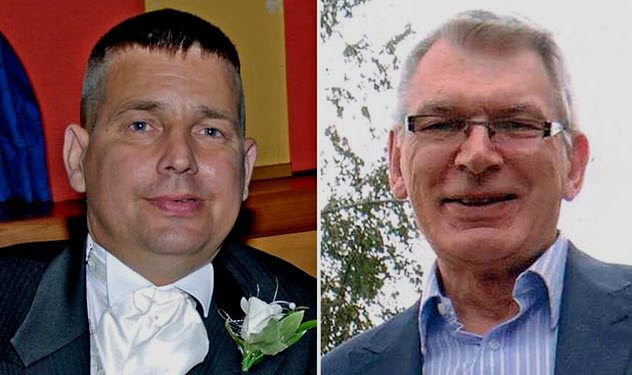
The first successful organ transplant was a kidney transplant between twins that took place in Boston in 1954. Since then, medical science has made tremendous advances in this field, but organ transplantation remains a very complex procedure. The organs need to be harvested almost immediately upon death, implanted successfully, and then accepted by their new hosts. The process remains risky, and with long waiting lists for organs all over the world, there’s no room for mistakes.
In 2015, Wales introduced its opt-out system, meaning that everyone in the country is an organ donor unless they specifically take themselves off the list. In the first six months after this was implemented, over 50 percent of donations came from people who had neither opted in nor out, showing huge promise for the future of organ donation.
This was, in part, a response to an incident that had taken place two years earlier in which two men were killed by a botched transplant. The victims were not donor and recipient, however. Instead, both men had received kidneys harvested from a homeless, alcoholic man.[1]
The University Hospital of Wales, Cardiff, was told that two kidneys were available from a man whose exact cause of death was unknown and that they were in “poor” condition. The organs had already been rejected by Birmingham, Edinburgh, Leeds, Manchester, Newcastle, and Sheffield.
But while most people would see these facts as red flags, the surgeons in Cardiff saw them as an opportunity and took the organs, all the while withholding the fact that the donor had meningitis. Turns out the donor’s meningitis and death were caused by a rare, parasitic kidney worm that has only been observed five times before.
The rarity of the parasite might make it seem like they could never have seen it coming. But the first six hospitals certainly did. The surgeon involved did apologize, however, saying, “Hindsight is a great thing.”
9 Quaid Twins
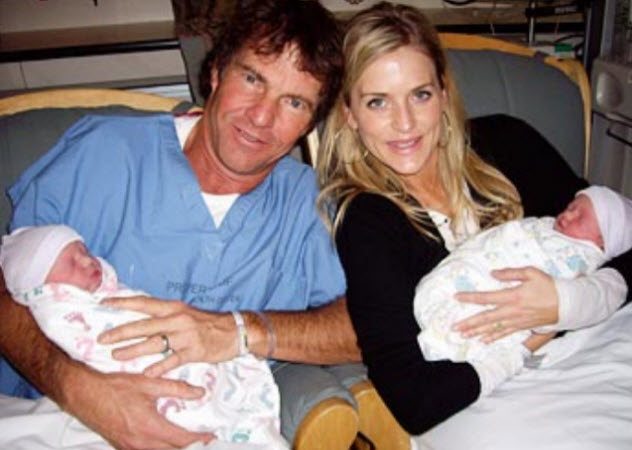
Being hospitalized can be a frightening experience, even if the cause is not particularly scary or life-threatening. Having your children hospitalized is even scarier, especially when they are newborns. And while there is always the chance that things could take a turn for the worse, the one thing you can always count on is that the hospital will keep you updated, even if they need to deliver the dreaded 3:00 AM phone call. Unless you’re Dennis Quaid.
“They’re fine. They’re just fine.” That was the response given to the famous actor when he called the equally famous Cedars-Sinai Medical Center in Los Angeles, California.
In reality, the medical staff was rushing around manically on the other end of the phone trying to save his newborn twins, who had been readmitted to the hospital after contracting a small infection. Trusting the staff at one of America’s most reputable hospitals, Quaid went to bed. He only found out the truth when he went to visit his twins at 6:30 AM the next day.
Quaid’s twins, Thomas Boone and Zoe Grace, had accidentally been given 1,000 times the recommended dose of heparin, a blood thinner that was causing them to bleed profusely. Without telling the parents, the hospital staff made unilateral and nonconsensual decisions to reverse the effects of the overdoses.[2]
Not only did this remove any say the parents would have had in their children’s health care, it could have robbed them of their last few hours with their children. The kids were black-and-blue when their parents finally saw them. At one point, blood squirted from Thomas as far as 1.5 meters (5 ft) away.
Fortunately, both twins survived the ordeal. The mistake was traced back to the pharmacy technicians, who had mixed vials filled with 10,000 units per milliliter alongside those filled with 10 units per milliliter. The nurse also admitted that she didn’t check the vials before administering the drug.
As if that wasn’t enough, it only took two days for a member of the staff to leak the story to TMZ. This created a whirlpool of press pondering whether the twins were going to die, which would have only added to the trauma of the situation.
8 In The Wake
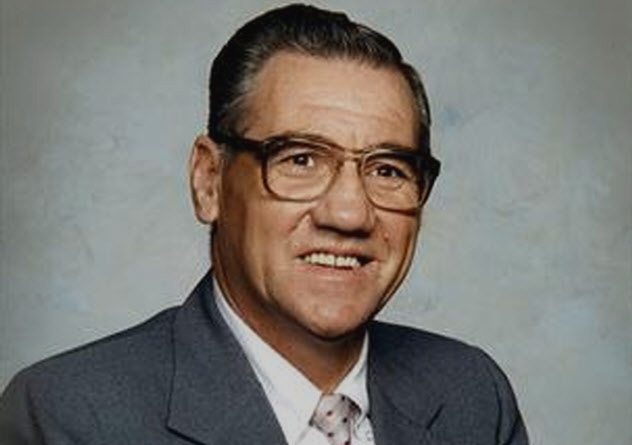
Anesthesia awareness is when a patient is perfectly conscious but unable to move during surgery. It is believed to affect about 0.1–0.2 percent of all surgery patients in the US, which is the kind of statistic that sounds both very low and far too high at the same time. In real numbers, it’s about 20,000–40,000 people a year.
Anesthesia awareness occurs because two different types of anesthesia are used in surgery, one to disable the body’s movement and one to put you to sleep. When the second one fails, you’re left trapped—seeing, hearing, and feeling everything but unable to move or make a sound.
This is what happened to 73-year-old Sherman Sizemore when he went in for exploratory surgery in 2006. It was a full 16 minutes before the anesthesiologist remembered to administer the drug to render Sizemore unconscious, meaning he felt a full 16 minutes of surgery.[3]
But Sizemore was never told this happened and couldn’t figure out if he was having memories or nightmares of the event. For weeks afterward, Sizemore was convinced that people were trying to bury him alive. Eventually, the mental anguish became too much and he committed suicide. Had he been told the truth, Sizemore would have been more likely to cope and seek help. But he was lied to and became the first known victim of anesthesia awareness to commit suicide.
7 Burning Sensation

Even if you practice safe sex, there is always a risk of contracting a sexually transmitted infection (STI). One of the most pervasive STIs in the world is human papillomavirus (HPV). The reason: Even with a condom, HPV can be spread by skin contact of the surrounding area even if the carrier is showing no symptoms. Though a vaccine exists, relatively few people get it. This is why most sexually active people will contract it at some stage, whether they realize or not.
One of the biggest risks with HPV is that it could lead to cancer. So when Kim Morrison tested positive for the virus, doctors decided to test her husband, William, as well. When men are tested for HPV, the suspect region is covered in acetic acid, the same solution used in ear drops.
Although this is usually limited to a solution of around 3–5 percent acid, Mr. Morrison was given a whopping 72 percent by registered nurse Lisa Parsons. Fortunately, the acid did not burn any part of Mr. Morrison into nonexistence, but it did cause “severe pain, chemical burns, and long-term physical and psychological injuries.”[4]
You may be cringing in horror right now, but 80 percent of sexually active people have this virus. Most show no symptoms.
6 Structurally Inadequate
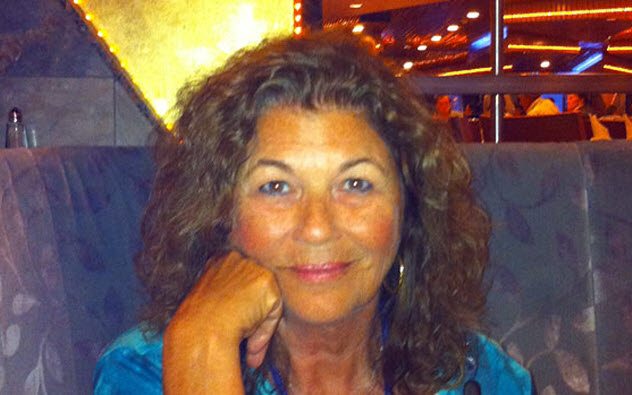
In 1983, Cheryl Sexton Dillon was told she would need a hysterectomy. In reality, she only needed surgery on her bladder. But as we will see, Dr. James C. Burt (aka the “love doctor”) was not a man who could be trusted. It is not this lie that has earned him a spot on this list, but instead, his ulterior motive for telling it.
Burt was perfectly qualified when it came to performing surgery and could have carried out the bladder surgery or hysterectomy with ease—if either of those things had been his goal. But, as seen in his 1975 book, Burt believed that women were “structurally inadequate” for sex, a problem that he claimed could only be addressed with surgery.[5]
So, throughout his career and without consent, Burt began reconstructing women’s vaginal canals while he was operating on them. In Cheryl’s case, Burt had repositioned her vagina and removed the clitoris (even though his alleged goal was to improve sexual satisfaction). Cheryl described the pain as excruciating, saying that she couldn’t sit or wear trousers without pain anymore.
When she was still in pain several weeks later, Cheryl sought a second opinion. Some of the words medical professionals used to describe her state included “mutilated,” “filleted,” and like “African tribes.” Cheryl had three corrective surgeries, but the damage was done and affects her to this day. Her marriage of 12 years fell apart.
Although Burt did have his medical license revoked in the late 1980s, he was never charged and the hospital settled out of court.
5 Group Therapy

Medical malpractice isn’t just limited to the treatment of the body. It can also relate to the treatment of the mind. In the case of Nadean Cool, her multiple personality diagnosis made her very susceptible to the undue influence of Dr. Kenneth Olson, her psychiatrist.
Olson correctly diagnosed Cool’s personality disorder, which was a good start. In fact, he actually diagnosed her with 120 distinct personalities, including some familiar faces such as the Devil and a duck. Whether there really were 120 personalities remains unclear, although it is unlikely.
Nevertheless, Olson found the situation to be a handy way to charge Cool for group therapy instead of one-on-one, raking in $300,000 with this little clerical change. During these sessions, which lasted for six years, he is alleged to have implanted false memories in his patient. These included memories of an abortion, childhood sexual abuse, and being pushed into a grave. Cool was left with traumatizing flashbacks, which she knew were fake, but they felt real enough to terrify her.[6]
Cool eventually sued Olson as well as the hospital where she was treated, which supposedly allowed Olson to perform an exorcism on her. The suit was settled in 1997 for $2.4 million.
4 Unassisted Dying Facility

The decision to put a member of the family in an assisted living facility is one that weighs heavily upon the minds of those forced to make it. While it can feel like a cold move, it is often the best thing for the person, particularly if you are unable to afford or provide adequate care at home. This was the decision that Lydia Scherrer was forced to make after her husband, Earl, sustained a traumatic brain injury in a car crash at age 26.
Earl spent the next 16 months in a coma. After he woke up, Lydia continued to work but devoted her free time to rehabilitating him. She helped him to regain the power of speech and stimulated his mind with elementary school textbooks. For 10 years, Lydia was the inspiring, relentless, devoted, and loving wife you only read about in books that people have typed with their eyes. This was brought to a sudden halt in 2006 when she decided to move him to a better facility with round-the-clock, comprehensive care.
After one month in the new facility, Earl vomited up a black substance and died in Lydia’s arms.[7] Just how her husband went south so fast was mind-boggling—until they looked just slightly below the surface. According to the facility, they had been taking care of Earl. So much care, in fact, that his charts showed they were regularly caring for him on days he wasn’t even there. (Lydia could check him out for a day or two at a time.)
If you’re wondering how you can care for someone who isn’t there, the answer is quite obvious: Ask someone else who isn’t there to do it. When the facility was investigated, nobody could find the man “Raul” who was allegedly Earl’s primary caregiver. In fact, there was no Raul, just a trail of falsified documentation.
But it was not simply the lack of care that killed Earl. When the autopsy report came back, it found a plethora of man-made objects inside his stomach, including unopened ketchup packets, paper towels, plastic bags, and candy wrappers. Exactly how these items were ingested remains unclear, but the case did culminate in the largest payout against an assisted living facility in Arizona history. The courts awarded $11 million to Lydia in 2009.
3 Wrong Organ
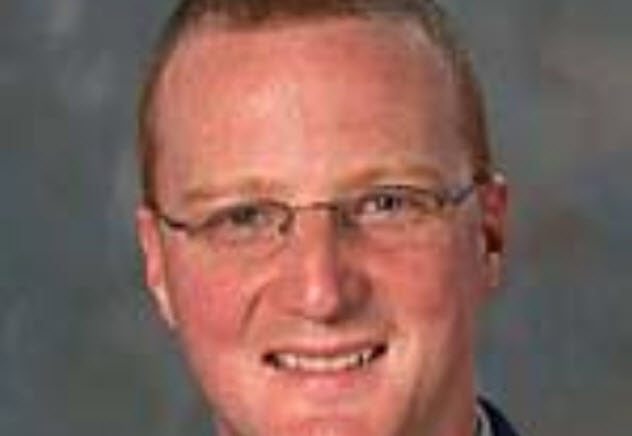
We’ve spoken before about how simple mistakes have led to surgeons accidentally removing the wrong half of a pair of body parts. From eyes to legs and even testicles, there are more than a few examples of “my left or his left?” that have resulted in people losing not one, but two of their precious body parts. At least in those cases, you can see where the confusion was. Not in the case of Dr. Patrick M. McEnaney.
Dr. McEnaney was a respected surgeon from Milford, Massachusetts, who was due to remove a patient’s gallbladder in 2006. If you know anything about human biology, you may be wondering what McEnaney actually did take out since we only have one gallbladder.
Well, as gifted as his colleagues claim he is, McEnaney somehow mixed up the gallbladder with the kidney. If you’re unfamiliar with human biology, the kidney looks like a big, lopsided square, while the gallbladder looks like a small pear. Basically, anyone should be able to distinguish the two.
Milford Regional Medical Center and state officials responded by first withholding McEnaney’s name. But they were forced to reveal it when the doctor’s license was suspended.[8] While that sounds like a good move, the state medical board also suspended that suspension and instead gave him five years’ probation.
McEnaney was allowed to continue to operate under supervision because his mistake was “serious” but “rare.” Fortunately, the 84-year-old woman he operated on made a full recovery.
2 Witch Doctor

Whether you’re seeking help for your mental or physical health, it is important to ensure that the person you see is a qualified professional. But the word “qualified” should not be equated to the word “professional” as Dr. Letitia Libman goes to show.
Libman was working as a qualified psychologist in Delnor-Community Hospital in Illinois until mid-2005 when she was hit by four different lawsuits alleging that she had been using witchcraft in her sessions. The first to come forward was Shelley Standau. Instead of receiving psychological help, she claimed that she received an education in a number of witch’s spells that would supposedly help her find happiness and achieve her dreams. When that didn’t work, Standau decided to sue for $1 million.
Deanna Whetstine, whose nerve damage left her living in chronic pain, was next to come forward. Rather than training Deanna to tune out the pain, Libman used a combination of psychic powers, tarot cards, love potions, and gun threats to treat her patient. At one point, Deanna even lived with Libman. These methods also failed to achieve effective and therapeutic results, which led Deanna to sue for $50,000.
Kathleen Carlson, the third victim, also sued for $50,000. She had approached Libman after the breakdown of her marriage. However, as much as Kathleen wanted closure for her marriage, she didn’t quite take to Libman’s idea of stealing the ex-husband’s DNA and using it to put a curse on him.[9]
Kenneth Sutter, who also sued for $50,000, claims that Libman tried to convert him to Wicca, encouraging him to contact the dead and replace his medication with Native American herbs. Libman didn’t put up much of a defense. She resigned almost immediately, saying that she doubts “very highly” that she said those things. At the same time, she described herself as a spiritual eclectic who follows Native American beliefs.
1 Seeds Of Doubt
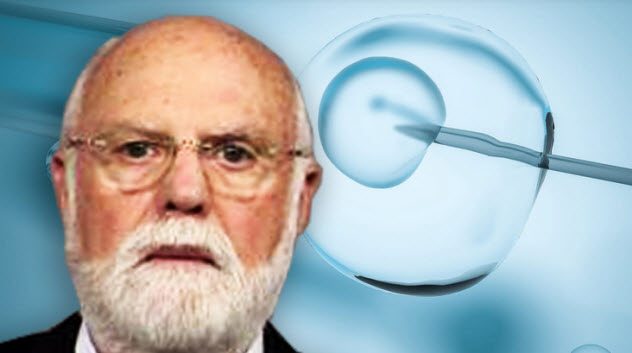
Usually used by individuals for a bit of lighthearted fun, DNA kits have become quite popular in the last few years. The thought of discovering that you might be 1 percent black or that you’re more Estonian than Irish is just innocent fun that usually won’t have a major impact on your life.
But when a woman named Carrie decided to try one of these kits, she got a lot more than she bargained for. As soon as the results came in, Carrie, who believed she was an only child, found out that she had at least eight half-siblings.
At the same time, two other women named Jacoba and Kristy had tracked each other down through a website that helps to match families with donors. After doing their own DNA tests, they also discovered a number of unexpected siblings.
It turns out that years before any of this, the parents of these people had all visited the fertility clinic of Dr. Donald Cline. He had promised each couple that the sperm they were receiving was fresh, from a young medical student, and would not be used more than three times.
In reality, the not-so-young Dr. Cline had been using his own sperm for at least eight years and, by his own admission, possibly as many as 50 different times.[10] Cline admitted wrongdoing, although he said he was only trying to help people have children. He also said that he would never have done it if he had known how far DNA studies would advance in his lifetime.
Simon is neither a doctor nor a nurse but feels more qualified than many of the people on this list. Contact him on Twitter for unqualified advice.
Read about more medical treatments that went disastrously wrong on 10 Horrifying Medical Mistakes That Could Happen To You and Top 10 Clinical Trials That Went Horribly Wrong.








![10 Abandoned Amusement Parks With Horrific Histories [Disturbing] 10 Abandoned Amusement Parks With Horrific Histories [Disturbing]](https://listverse.com/wp-content/uploads/2019/09/gulliver-150x150.jpeg)